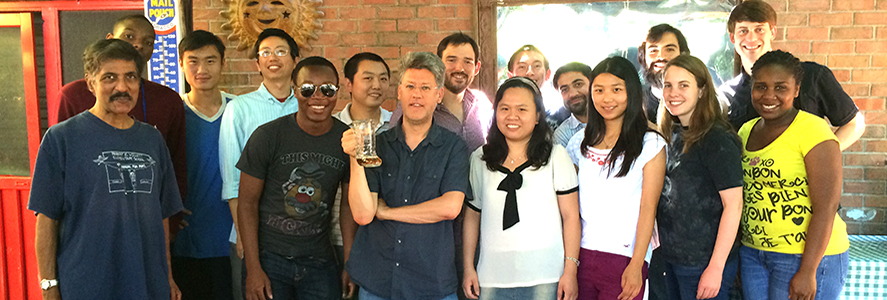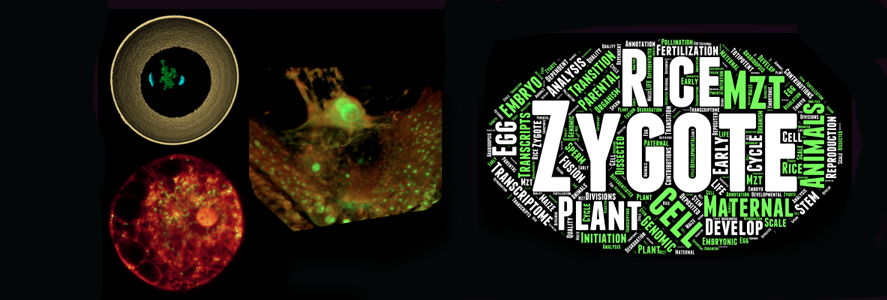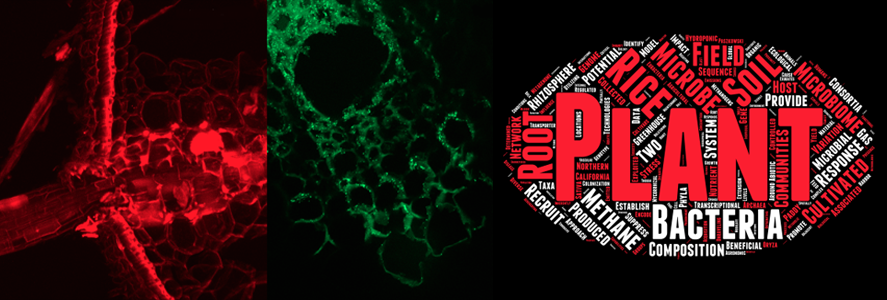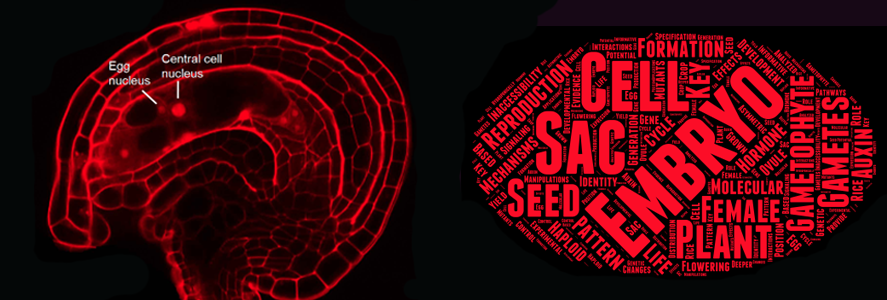Welcome to the Sundaresan Lab Home Page !
An overview of current projects & foci in lab
NEWS !
Paper on the assembly of rice microbiomes and commentary just published in PNAS.
Read New York Times article on rice microbiome
Genomics of the Zygotic Transition in Rice
The fusion of two highly differentiated cells, the egg cell and the sperm cell, results in a totipotent zygote: a single cell with the capacity to develop into an entirely new organism. In this respect, the zygote can be considered to be the ultimate stem cell. In both plants and animals, early embryo development is dependent on maternal transcripts deposited in the egg cell before fertilization. The degradation of these maternal transcripts and the initiation of zygotic transcription take place during the Maternal to Zygotic Transition (MZT). Regulation of the MZT in plants and animals is critical to successful reproduction. Read more...
The Rice Microbiome
Plants, much like humans and other animals, harbor rich communities of potentially beneficial bacteria. The collective genomes of this complex microbial network, termed the metagenome, encode diverse metabolic capabilities unfounded within plants, essentially offering a functional extension to the host plant's genome. Soil microbes in close proximity to plant roots (termed the rhizosphere) have been shown to promote plant disease suppression and nutrient acquisition.
Using rice (Oryza sativa) as a model, we are answering questions based around how plants recruit and moderate their associated root microbiomes. Unraveling the composition and maintenance of the rice microbiome is not only important for bolstering our basic understanding of host-microbe interactions: it is of great agronomic and ecological importance as well. Read more...
Patterning of Arabidopsis Embryo Sac
Development of the gametophyte, the haploid generation of the plant life-cycle, is important for plant reproduction and seed formation. In flowering plants, the female gametophyte is called the embryo sac. It consists of only four cell types, including two gametes, which are the result of a precise developmental program.
Until recently, relatively little was known about the molecular mechanisms that establish developmental pattern in the embryo sac, in part due to the relative inaccessibility of the gametophyte and the limited availability of informative mutants. Read more...









